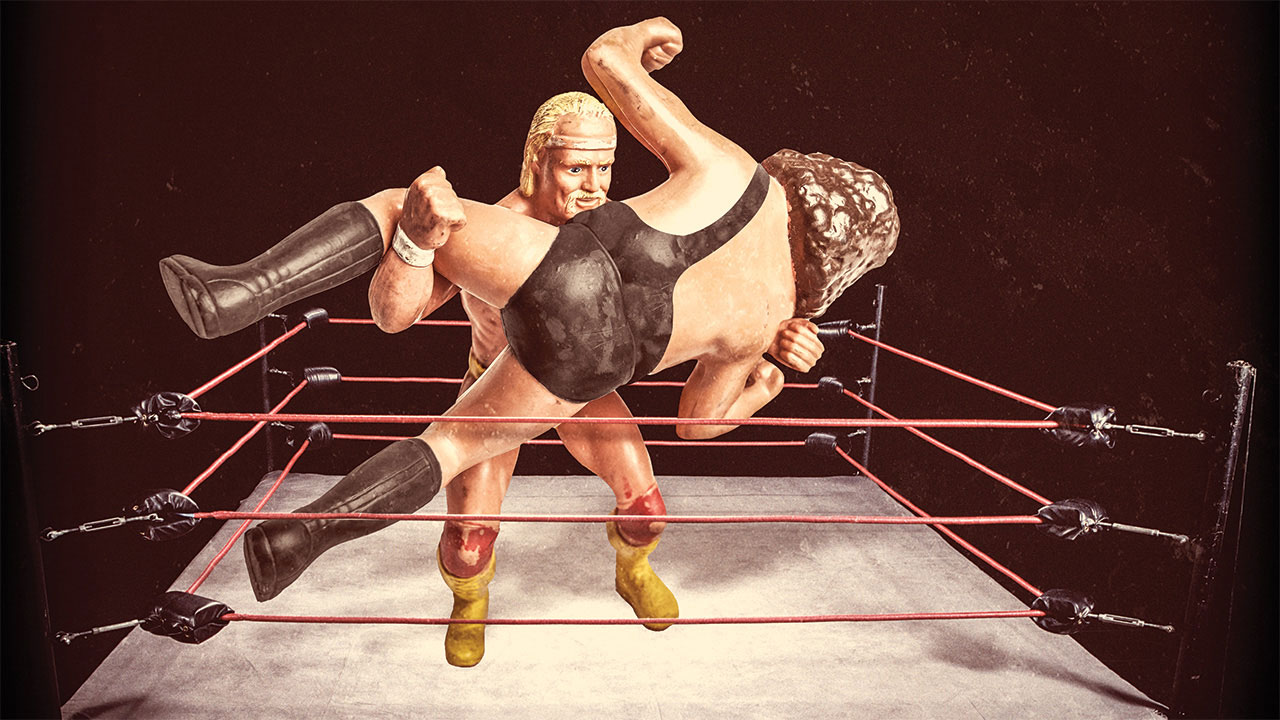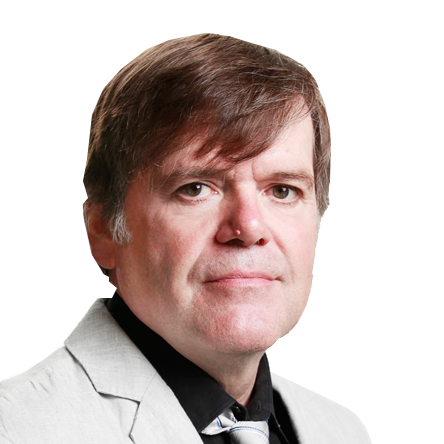Imagine the frustration felt by heels and babyfaces alike: Back in the ’80s, the very elite of professional wrestlers worked in the considerable shadows of two guys who couldn’t wrestle a lick. Chiselled specimens who could do backflips off the top rope, former Olympic athletes, second- and third-generation pros who grew up in the game all took a back seat to André the Giant, the immovable object, and Hulk Hogan, a wrestler who barely mastered a single basic move.
In the 1980s, pro wrestling crossed over into a polluted tributary of mainstream culture on the broad back of Hogan, born Terry Bollea and briefly known on minor circuits in the South as Sterling Golden. WWF maestro Vince McMahon Jr. tapped Hogan-Bollea-Golden after seeing him work under a fourth moniker: He was Thunderlips in Rocky III.
There’s no accounting for Hogan’s runaway success other than writing it off to lowbrow whim. He was six-foot-seven and 290 lb., draped in a half-acre of skin toasted melanoma-brown and topped by a Day-Glo headband and a peroxide skullet. Of course, momentum for a show-carrying hero can peter out in weeks if not torqued by the just-right villain. So the WWF needed a foil who posed a physical threat without flashing so much grappling skill that he’d expose the champ’s limited repertoire, namely a leg drop that folks at home can perform if they try to sit too quickly on a chair pulled out from under them.
Along came André the Giant (né André Roussimoff). André was billed at seven-foot-four and, through most of his career, more than 500 lb. He actually could wrestle—back in his early days, in the early ’70s, he was capable of drop kicks and various other manoeuvres that brutalized opponents and tested the underpinnings of rings. But by the mid-’80s, if he fell to the mat he practically needed a crane to get back on his feet. McMahon Jr. decreed that André should stick to being the foreboding man-mountain who by some mystical power could not be body-slammed. (This shtick must have been a late-career development because Don Leo Jonathan, another Hall of Famer, used to toss a young André like an airport baggage handler would a moderately sized suitcase filled with fine china.)
Though wrestling records stand up to fact-checking like myths of ancient Greece, the consensus among grappling obsessives is that André went unbeaten for 10 years starting in 1977. The WWF pitched the Hulk-André storyline as the inevitable meeting of the undefeateds, but back in the early ’80s, André, then the people’s choice, had pinned a pre-Hulkamania Bollea at Shea Stadium.
On March 29, 1987, the WWF reached its pinnacle at WrestleMania III, when the pay-per-view showcase drew more than 93,000 to the Pontiac Silverdome, then the largest crowd for an indoor sports event in North America. In the headliner, Hogan lifted André on his second try and his self-proclaimed “slam heard ’round the world” effectively ended the suspense-free match but for requisite posing thereafter. Unfortunately, when the bell rang that night, it tolled for wrestling’s mainstream cachet. In poor health, André was reduced to the world’s largest bit player and Hogan’s foils were never so big again.
This story originally appeared in the Aug. 26, 2013, issue of Sportsnet magazine.

